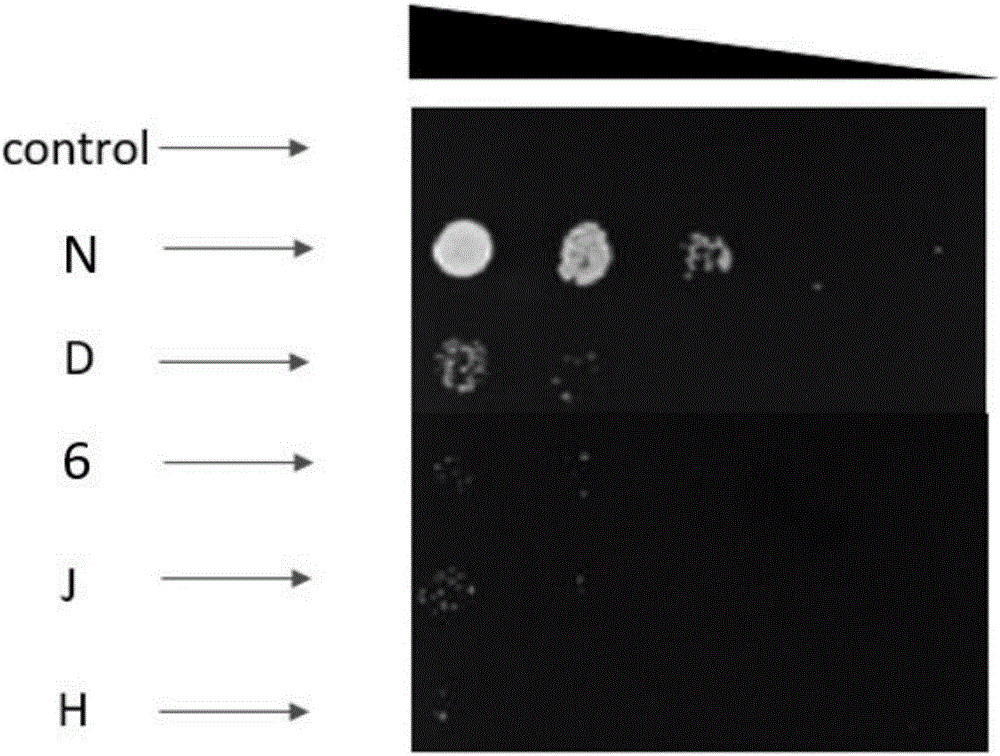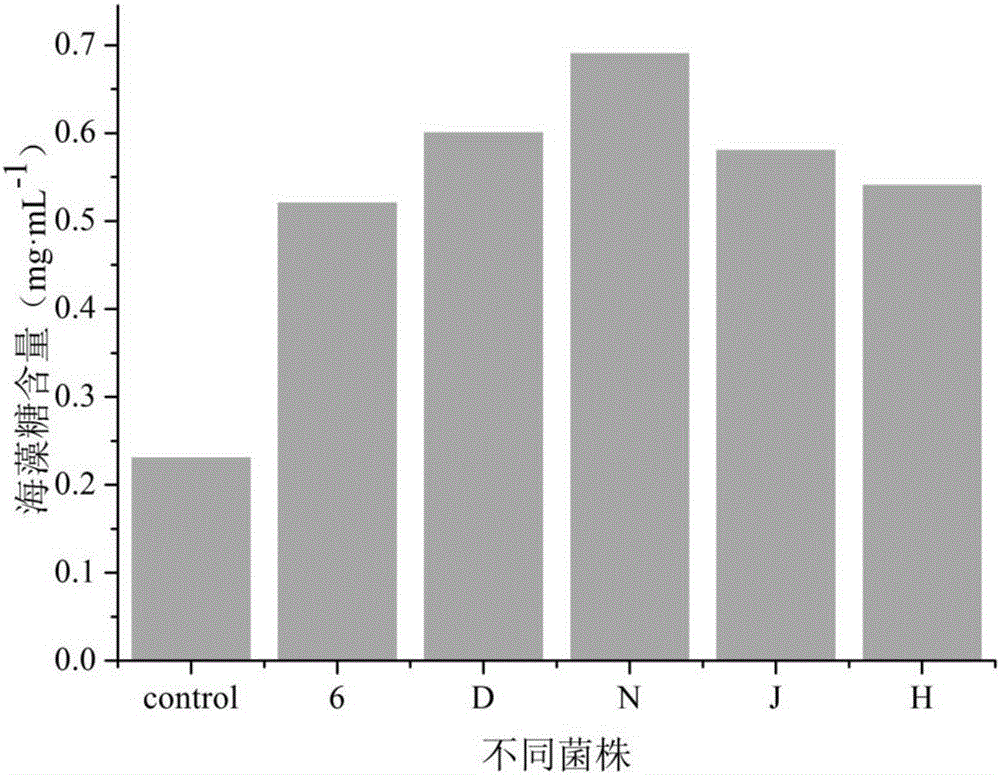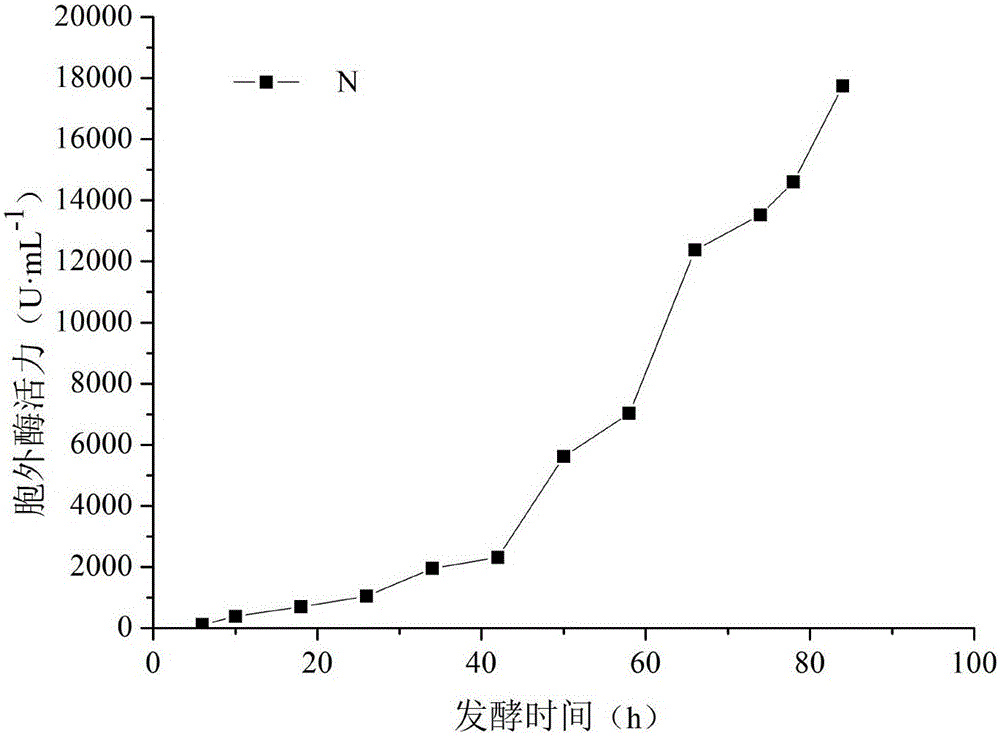High secretion heat-resisting yeast genetically engineered bacterial strain and applications thereof
A high-secretion, Pichia pastoris technology, applied in the biological field, can solve problems such as high energy consumption and lower temperature, and achieve the effect of high trehalose content
- Summary
- Abstract
- Description
- Claims
- Application Information
AI Technical Summary
Problems solved by technology
Method used
Image
Examples
Embodiment 1
[0049] Embodiment 1: bacterial strain mutagenesis method
[0050] Mutation methods such as ultraviolet mutagenesis, chemical reagent mutagenesis, and normal pressure room temperature plasma mutagenesis are used.
[0051] References of ultraviolet radiation, diethyl sulfate, and nitrosoguanidine mutagenesis methods [The mutagenic effect of different mutagenesis methods on hyaluronic acid-producing strain Sz560, Ding Yong, Shi Xiaoyong, Zhang Xinming, Food Research and Development, 2012,12:50 -53]. Atmospheric pressure and room temperature plasma mutagenesis method reference [ARTP mutagenesis breeding of low-purine Saccharomyces cerevisiae, Kang Fushuai, Yan Bing, Lu Nanquan, Zhou Shishui, Modern Food Science and Technology, 2014, 2: 188-191]. During the research process, the strains were mutagenized by the above methods and different combinations of the above methods.
Embodiment 2
[0052] Embodiment 2: the domestication of bacterial strain
[0053] The strains obtained by different mutagenesis methods were mixed (mixed strains) for high-temperature acclimatization. The mixed bacteria were inoculated into fresh YPD medium for temperature gradient acclimatization culture at 32°C, 34°C, 36°C, 38°C, 40°C. The mixed bacteria were inoculated into 100 mL of fresh YPD medium for cultivation at 32°C, and the original starter bacteria were simultaneously inoculated into 100 mL of fresh YPD medium for cultivation at 30°C, with an initial OD of 0.1. Cultivate for 72 hours to acclimate to one generation. Measure the OD after the end of the first generation. If the ratio of the OD value under high temperature conditions to the OD value of the original starting bacteria at 30°C is greater than 1, then enter the next temperature gradient acclimatization, otherwise, continue to transfer to fresh medium for this process. The second acclimatization of temperature until t...
Embodiment 3
[0054] Example 3: Monoclonal isolation of temperature-resistant and high-secretion domesticated strains
[0055] 1) Evenly spread the mutagenized and acclimated strains on the screening medium, and culture them in a 40°C incubator for 3 days.
[0056] 2) Pick 28 single clones with the largest colony and the most obvious red transparent circle and culture them overnight in 5 mL of fresh YPD medium. The larger the colony, the better the activity at high temperature, and the more obvious the red transparent circle, the higher the activity of the lipase secreted and expressed.
[0057] 3) Inoculate 28 single clones in 100mL fresh YPD medium, culture at 40°C and 200rpm for 3 days at a constant temperature, and screen out 5 strains with the best growth conditions for follow-up experiments. The 5 strains are respectively named 6, D, N, J, H.
PUM
 Login to View More
Login to View More Abstract
Description
Claims
Application Information
 Login to View More
Login to View More - R&D
- Intellectual Property
- Life Sciences
- Materials
- Tech Scout
- Unparalleled Data Quality
- Higher Quality Content
- 60% Fewer Hallucinations
Browse by: Latest US Patents, China's latest patents, Technical Efficacy Thesaurus, Application Domain, Technology Topic, Popular Technical Reports.
© 2025 PatSnap. All rights reserved.Legal|Privacy policy|Modern Slavery Act Transparency Statement|Sitemap|About US| Contact US: help@patsnap.com



